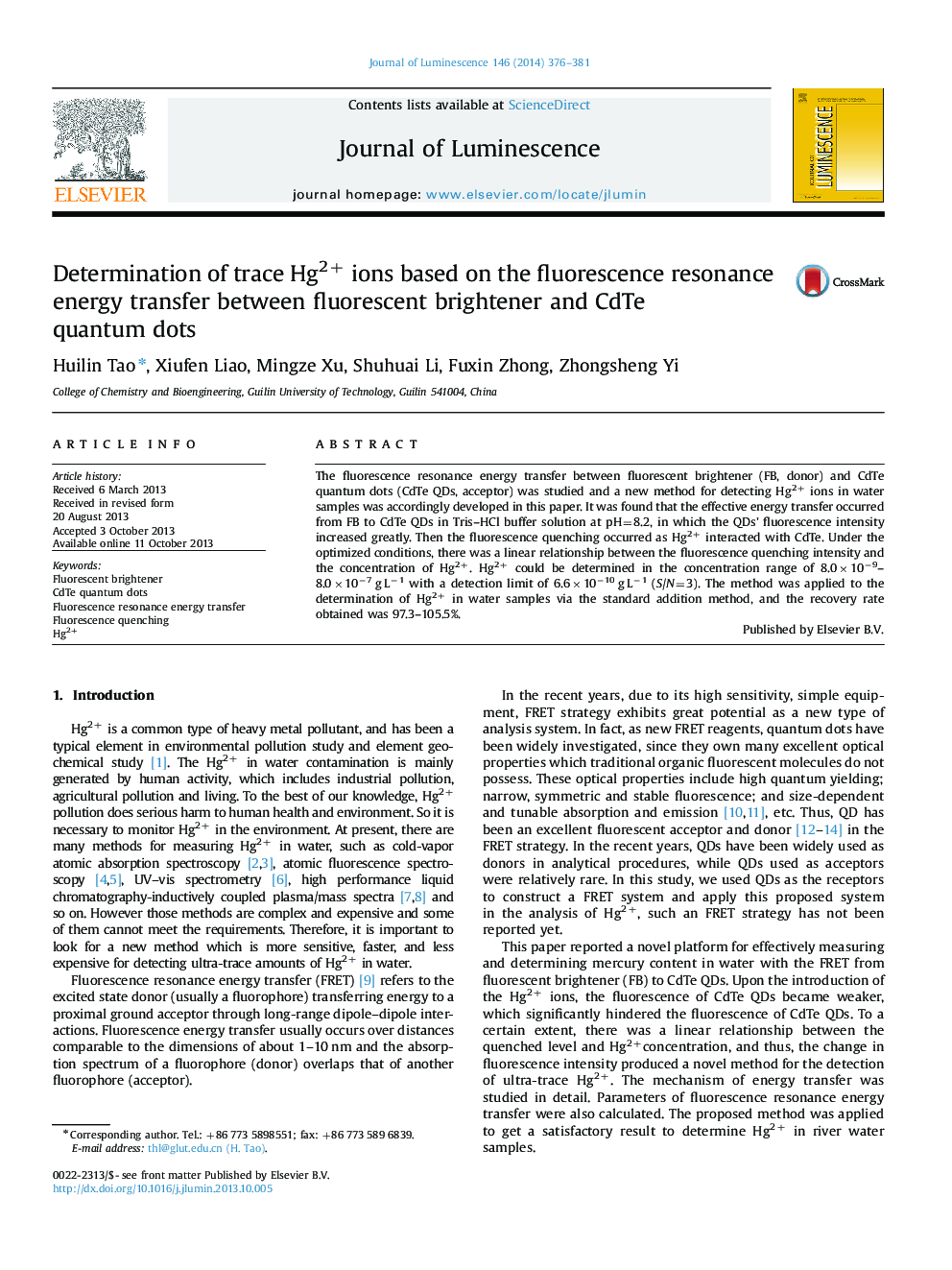| Article ID | Journal | Published Year | Pages | File Type |
|---|---|---|---|---|
| 5400355 | Journal of Luminescence | 2014 | 6 Pages |
Abstract
The fluorescence resonance energy transfer between fluorescent brightener (FB, donor) and CdTe quantum dots (CdTe QDs, acceptor) was studied and a new method for detecting Hg2+ ions in water samples was accordingly developed in this paper. It was found that the effective energy transfer occurred from FB to CdTe QDs in Tris-HCl buffer solution at pH=8.2, in which the QDs' fluorescence intensity increased greatly. Then the fluorescence quenching occurred as Hg2+ interacted with CdTe. Under the optimized conditions, there was a linear relationship between the fluorescence quenching intensity and the concentration of Hg2+. Hg2+ could be determined in the concentration range of 8.0Ã10â9-8.0Ã10â7 g Lâ1 with a detection limit of 6.6Ã10â10 g Lâ1 (S/N=3). The method was applied to the determination of Hg2+ in water samples via the standard addition method, and the recovery rate obtained was 97.3-105.5%.
Keywords
Related Topics
Physical Sciences and Engineering
Chemistry
Physical and Theoretical Chemistry
Authors
Huilin Tao, Xiufen Liao, Mingze Xu, Shuhuai Li, Fuxin Zhong, Zhongsheng Yi,
